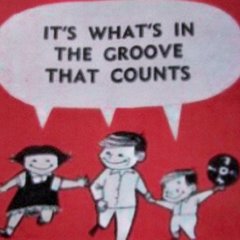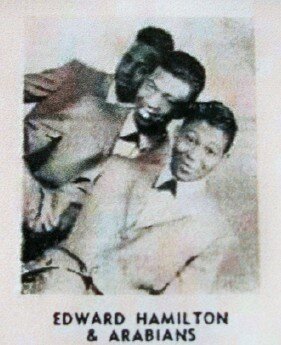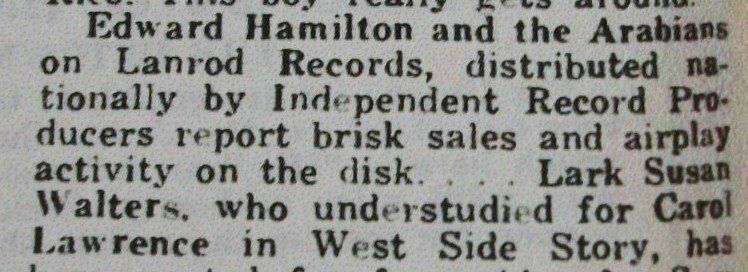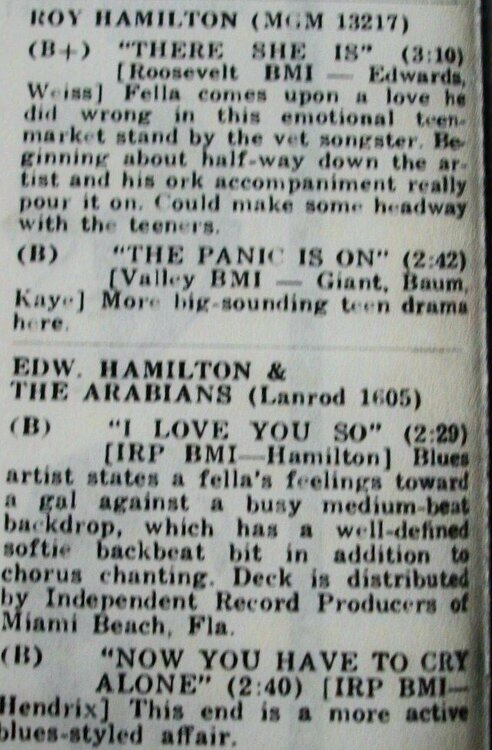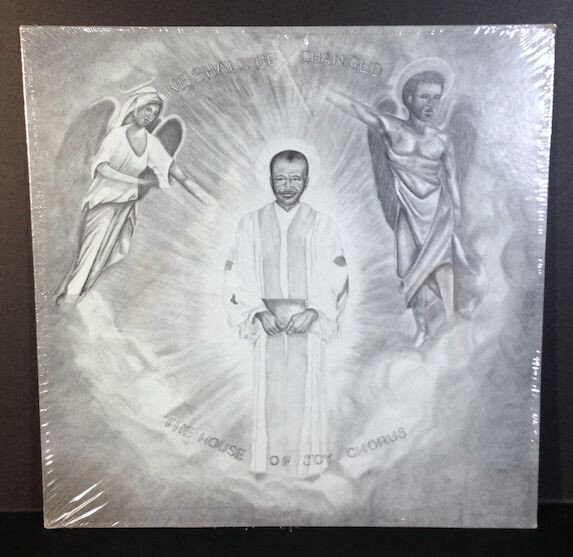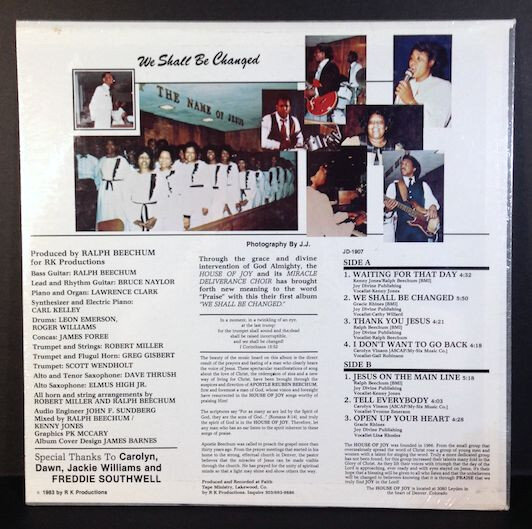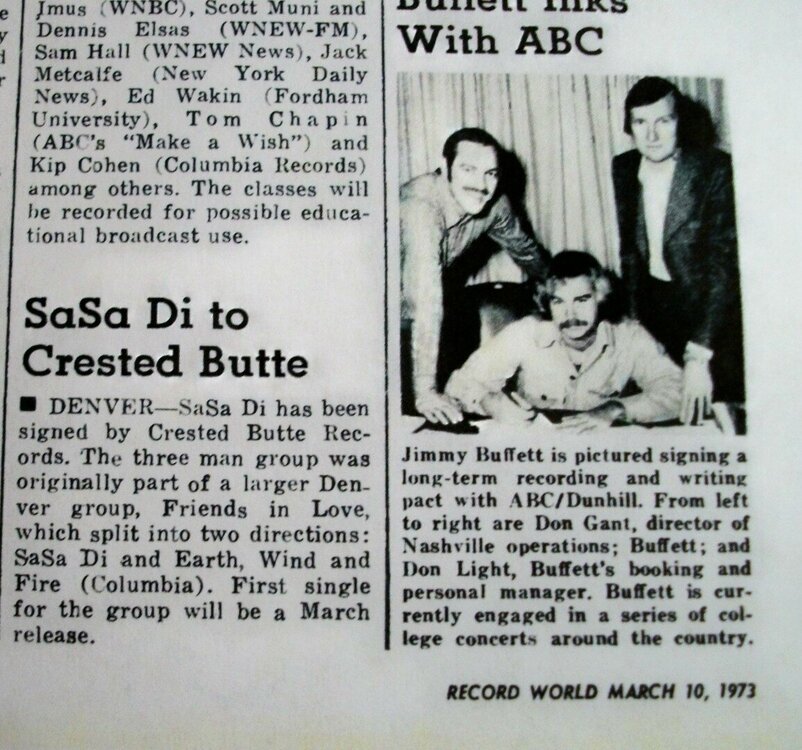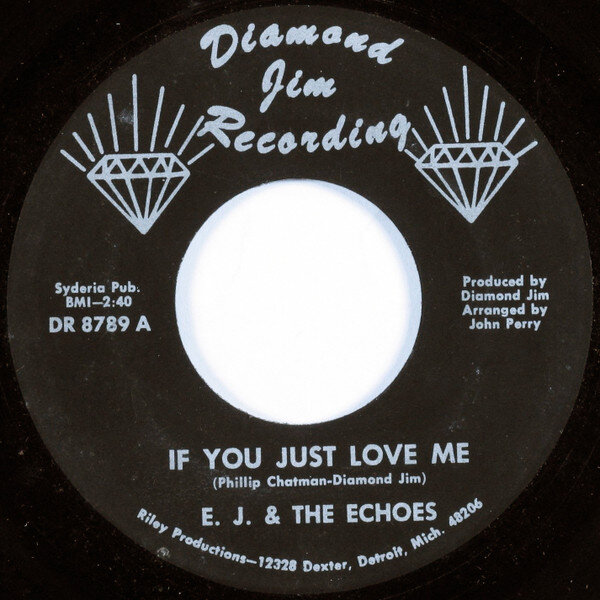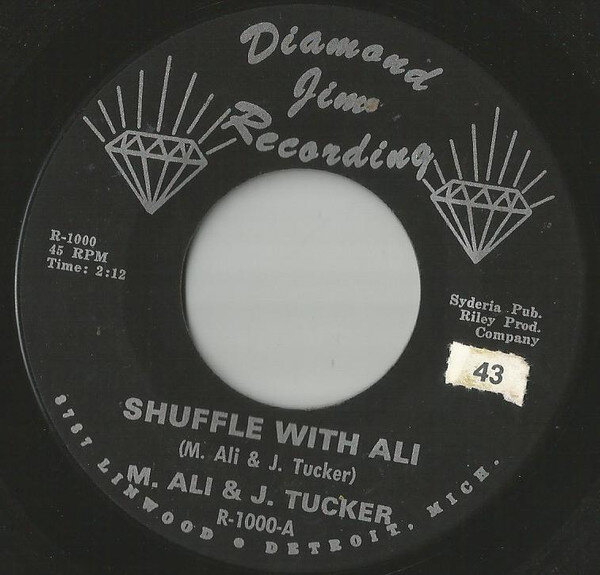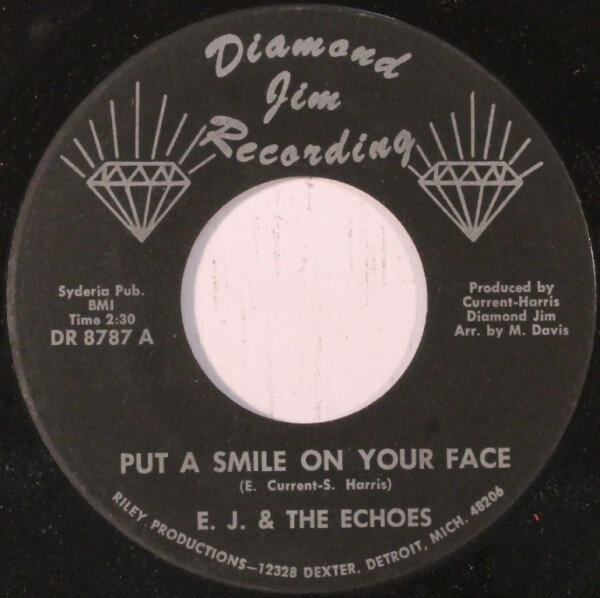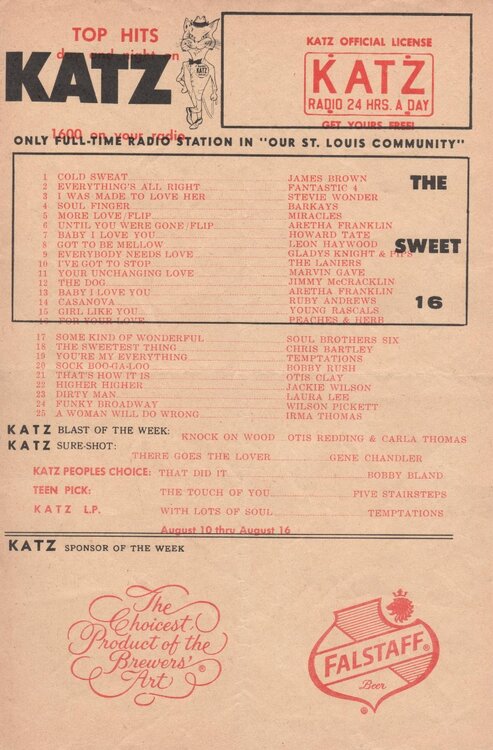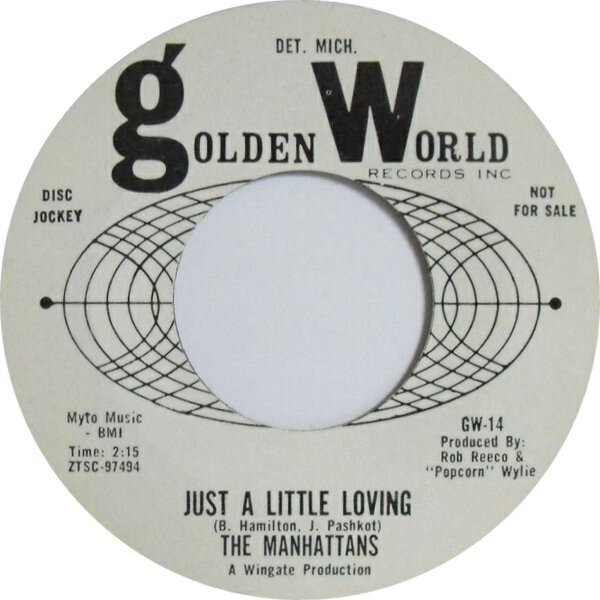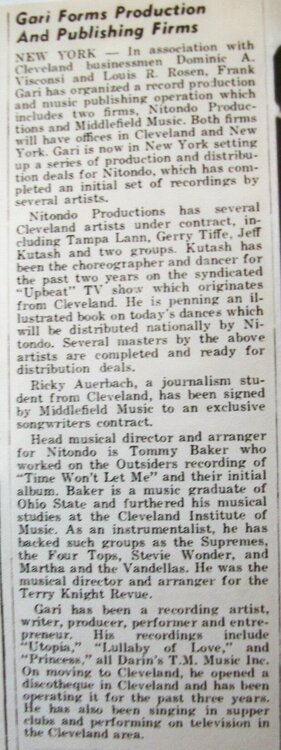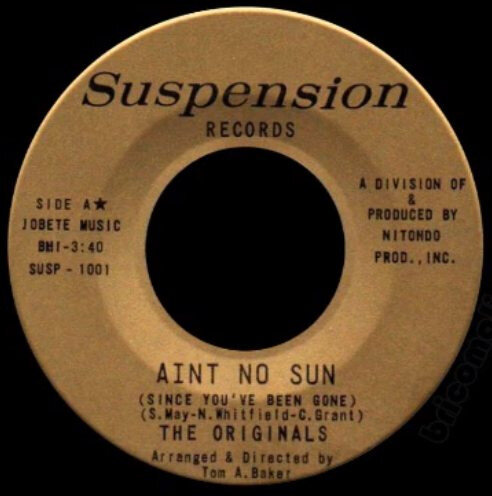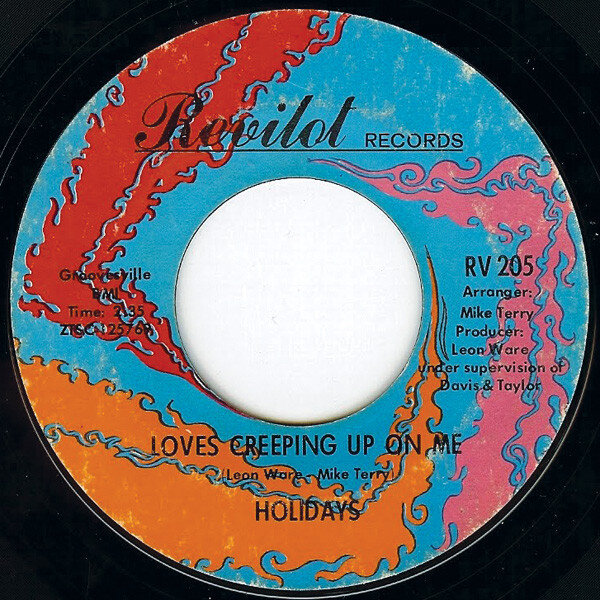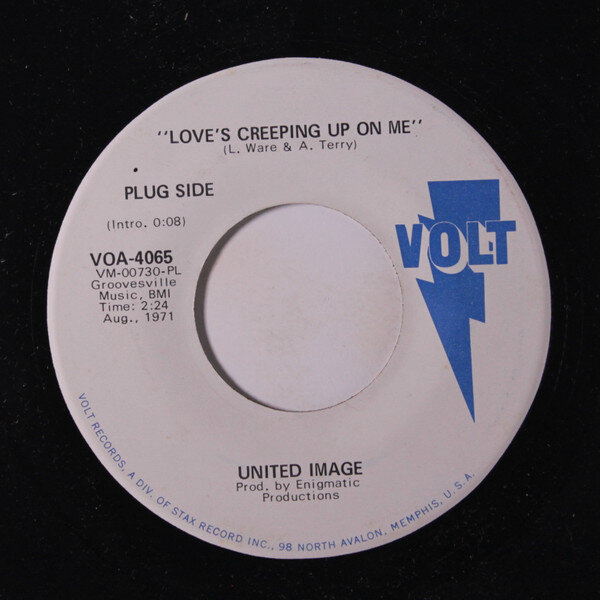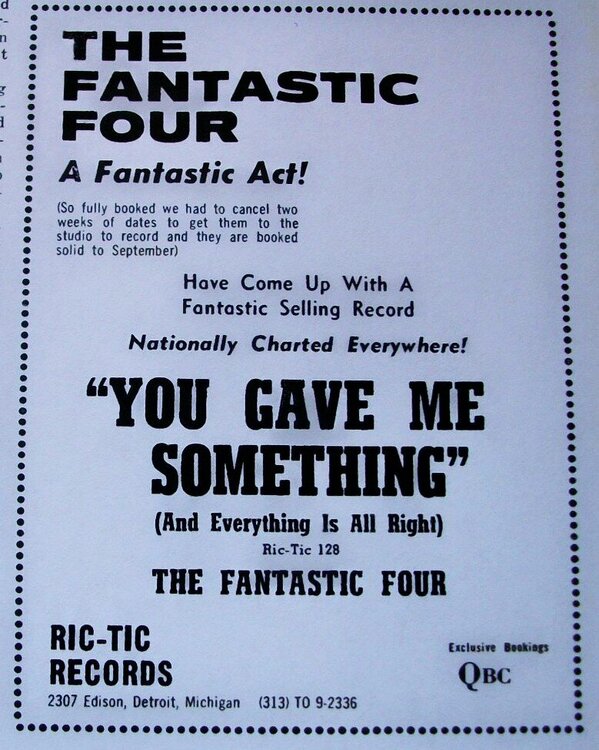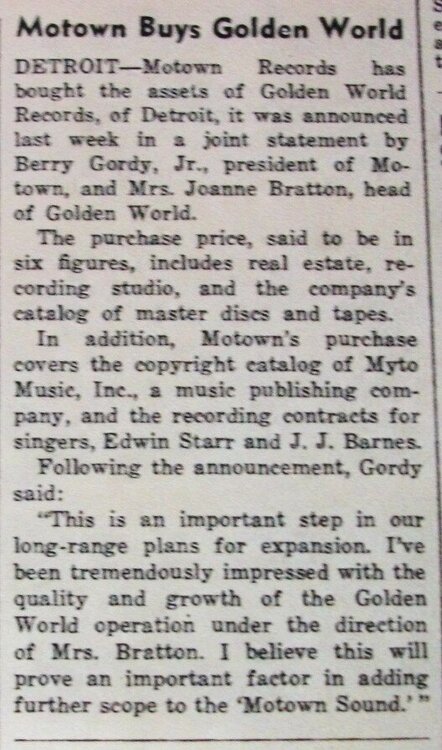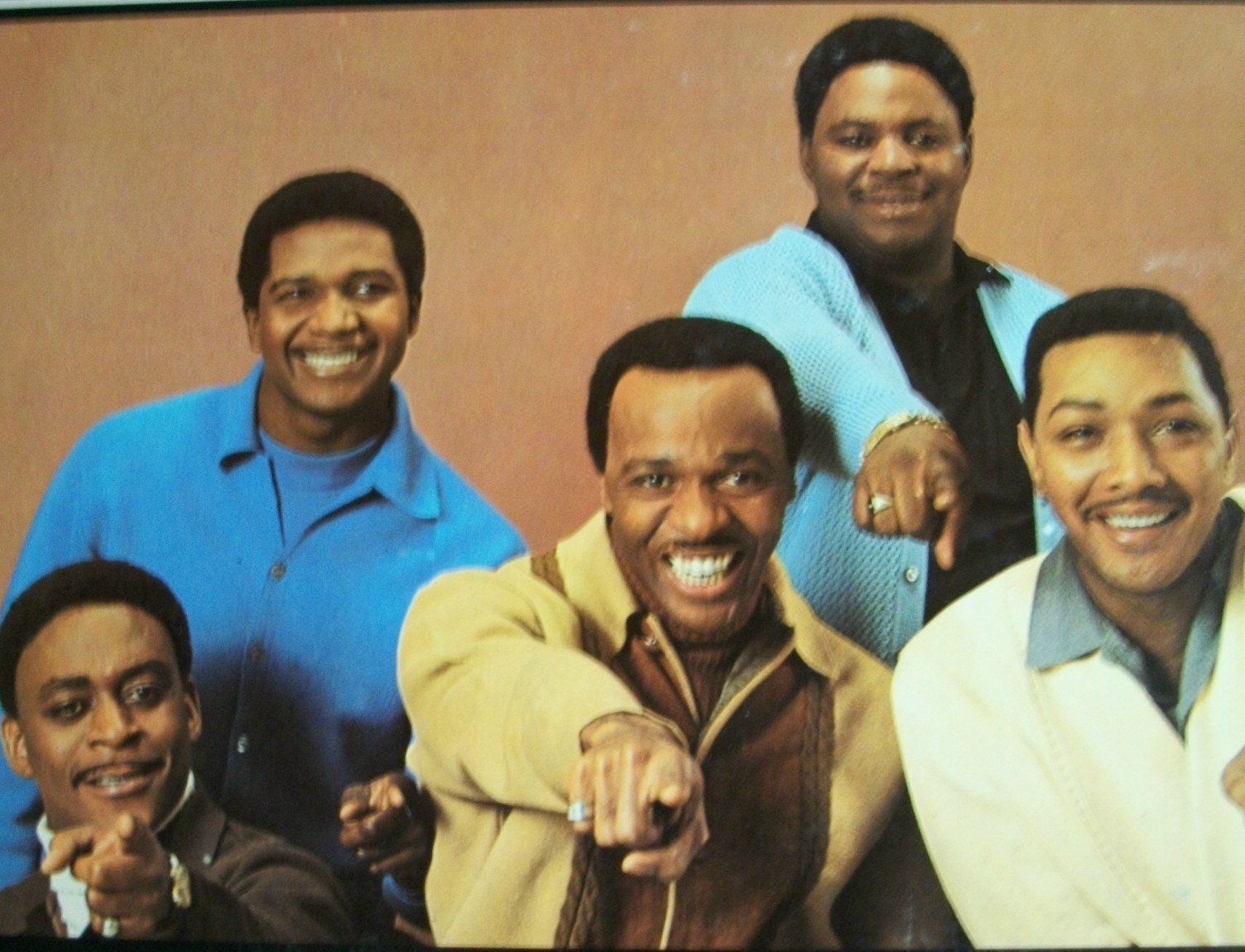
Everything posted by The Yank
-
Edward Hamilton & The Arabians - 60's Detroit Acetate
-
Edward Hamilton & The Arabians - 60's Detroit Acetate
I found these two articles in February, 1964 issues of Cashbox . The 1st one announces Lanrod is distributed by the I.R.P. group and the 2nd one reviews the single with I.R.P. as the publishers of the 2 songs-
-
Buddy Smith Interview on YouTube
Eddie Bishop's "Call Me" is mentioned in Billboard and Cashbox during the week of July 2, 1966. Chris Montez's version was released in October of 1965.
-
Buddy Smith Interview on YouTube
I appears that Edward morphed two people into one with CHRIS Montez and Petula CLARK = CHRIS CLARK? I don't see a version of Tony Hatch's "Call Me" on Motown until the Supremes and Four Tops did a version in 1971.
-
Buddy Smith Interview on YouTube
Petula Clark's "Call Me" was never released as the A side of a single ( it might show up as a B side or on a reissue 45). It is on the "I Know A Place " album though. Chris Montez had the hit version of "Call Me" in the U.S.
-
Sasa Di
-
Sasa Di
I think the article could be referring to Phillip Bailey who was born in Denver.
-
Sasa Di
There's not much info on the group. I did find this though- I'd like to know more about the E, W, and F connection -
-
Manual B. Holcolm & His Band – This Generation
I would go with 1968 but I'm not 100% positive. If you look at the bottom of the label of the E.J. release (Dec. 1967) it says "Riley Productions-12328 Dexter, Detroit, Michigan 48206. A later release from August, 1968 also has the Riley Productions..... info. "This Generation" just uses the Dexter Street address. There may be another reason why this info is on some late '67/ early '68 releases. This coupled with a random release numbering system makes it very hard to be sure.
-
Manual B. Holcolm & His Band – This Generation
I think 1967 or 1968 is more likely. Diamond Jim's release #'s are erratic to say the least. While #1000 is from 1966 -it''s got the Linwood address at the bottom. By the time of E.J. and the Echoes release (late 1967) the company was using the Dexter street address which is what "This Generation" uses. So late 1967 or 1968 seems make more sense.
-
The Tripps Versus Gene Chandler
I would say the Gene Chandler was the first to be released. The single was reviewed in the August 19th Billboard but as you can see by this survey (dated August 10,1967) it was already out. I can't find the Tripps 45 being mentioned anywhere before October, 1967.
-
Al Kent (Al Hamilton interview) Lonely Teardrops
In the book "Berry Motown and Me", Raynoma Singleton mentions a demo had been cut on the song using Eddie Holland. It was originally almost a ballad. There is no mention of Al Kent though.
-
Gene Redd - Detroit
Just so we're on the same page, all of my posts were about this part of the thread "... wonder what else Gene Redd might have done in Detroit in the 60's- most likely at Golden World Studios."
-
Gene Redd - Detroit
Here's 2 more- Fantastic Four "Girl Have Pity On Me" and Tamiko Jones "I'm Spellbound".
-
Gene Redd - Detroit
Was she referring to the Carnival Manhattans or the Golden World Manhattans? A few more Gene Redd Detroit songs would be Shirley J. Scott's "Goose Pimples" and Darrell Banks "I've Got That Feelin' ". "I'm Gonna Hang My Head And Cry", and "Look Into The Eyes Of A Fool" .
-
Ain't no sun since you've been gone - Cover Up ?
This Originals is probably one of the "two groups" mentioned in this article (Cashbox November 18, 1967)
-
Ain't no sun since you've been gone - Cover Up ?
-
Joni Wilson: Volt
That info about United Image/ Double Exposure is on Discogs.
-
Joni Wilson: Volt
The production company sure lived up to it's name. The Holidays' version of "Love's Creepin' Up On Me" makes no mention of Enigmatic Productions but United Image's version over the same track is now an Enigmatic Production ?
-
Golden World / Ric Tic bits
- Brenda Holloway alt ?
After listening to both versions back to back on "The Complete Motown Singles...1965", I did find one difference between the 2 versions. On the original mix (...312), Brenda ends the song by singing "What Are You Gonna Do When I'm Gone" four times. On the 2nd version (...209), Brenda ends the song by singing "What Are You Gonna Do When I'm Gone " five times. This version did last longer- some copies have the time as 2:05, some as 2:10- maybe Motown didn't want to have to re-do the time on the labels and left it as is? "When I'm Gone" was a big seller for Brenda- it went to #25 Pop and Soul -#12 on the Billboard charts.- Brenda Holloway alt ?
According to Manship's 6the edition price guide, the 312 mix is harder to find on stock copies versus the 209 mix which is commoner. I just listened to both versions back to back and can't notice much of a difference between the 2 mixes.- Golden World / Ric Tic bits
- Golden World / Ric Tic bits
- Golden World / Ric Tic bits
- Brenda Holloway alt ?

